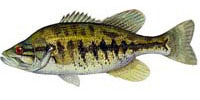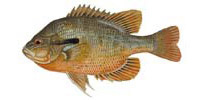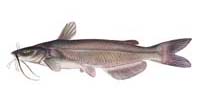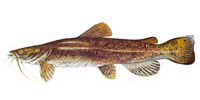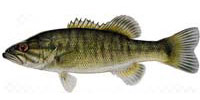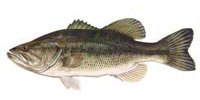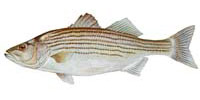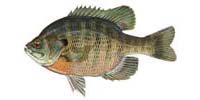Flint River runs for 344 scenic miles down the western side of the state of Georgia, offering not just beautiful views but excellent fishing of sport fish such as channel catfish, flathead catfish, largemouth bass, spotted bass, shoal bass, and redbreast sunfish. The shoal bass in particular is a rare native of the warm subtropical waters of Georgia, eastern Alabama, and Florida.
Lower Flint River’s most numerous and well-known fish is the shoal bass, and the best seasons for catching them are spring and fall. Shoals feed actively at midday. They are aggressive and are known to respond well to jigs and artificial baits, like soft plastics in crawfish patterns. They can enjoy natural baits too, like worms, minnows, and flies. Try using topwater lures in shoal areas. Shoal Bass prefer swift water. Flint River anglers have found good spots upstream of Highway 32 in Lee County and below Newton in Baker County. In the early spring, try areas around the Albany and Blackshear dams. At the mouth of the Ichawaynochaway Creek, there are small islands upstream which are good spots for shoal bass fishing. There is a shoal bass catching regulation of twelve to fifteen inches.
Anglers of Flint River consider its white bass to be difficult catches. If you’d like to try your hand, visit the trail-races below Lake Worth and Blackshear during the springtime. Try using small jerk baits in their schools. Chase them with bait on the water surface.
Flint River anglers love catfish, which are active at dusk, dawn, and nighttime in the summer, and even in the springtime before spawning season, as the water rises. It’s recommended you use live bait such as bream, but worms, dead shrimp and chicken liver also work well. Target locations are downstream of Highway 32, Lee County, above Newton in Baker County, and in the shoals, especially around Warwick dam.
Flint River’s largemouth bass population is going strong. Good spots for largemouth have been found in the two-mile river stretch below Warwick Dam, and from Abrams Shoals to Lake Chehaw. Largemouths get easier to find as the waters get warmer and river levels recede. But fishing for largemouth can be good in the wintertime too, when largemouths gather around the springs. They bite artificial lures, like crankbaits, top water, spinnerbaits, and soft plastics. Look for trees along the shoreline and throw your line close, because largemouths like to congregate close to cover.
Flint River also has large populations of striped and hybrid bass. Look for them both below Albany dam. Both types of bass are fans of bucktails. Many anglers use chicken liver and live shad. Crankbaits can also work very well.
The bream in Flint River are bluegill and redear sunfish. Bream enjoy live and artificial baits, like beetle spins, crickets and small jigs. The bluegills are aggressive and go after artificial lures. The redear sunfish are fond of clams and snails. Both prefer the slower sections of the river and orient themselves to spots of stillness around rocks and logs. They’re popular with fly-fishers.
If you happen to catch any fish that are tagged, it’s recommended you report those fish to the Albany Fisheries Management Office. Note that striped bass fishing and spearfishing are not permitted from the start of May to the end of October.
Flint River Fish:
Flint River boat ramps:
The following boat ramps provide access to Flint River.
Flint River Boat Ramp
County Rd-55 Newton, GA
Directions
Flint River Boat Ramp
8599 River Trace Rd Camilla, GA
Directions
Flint River Boat Ramp
Albany, GA
Directions


